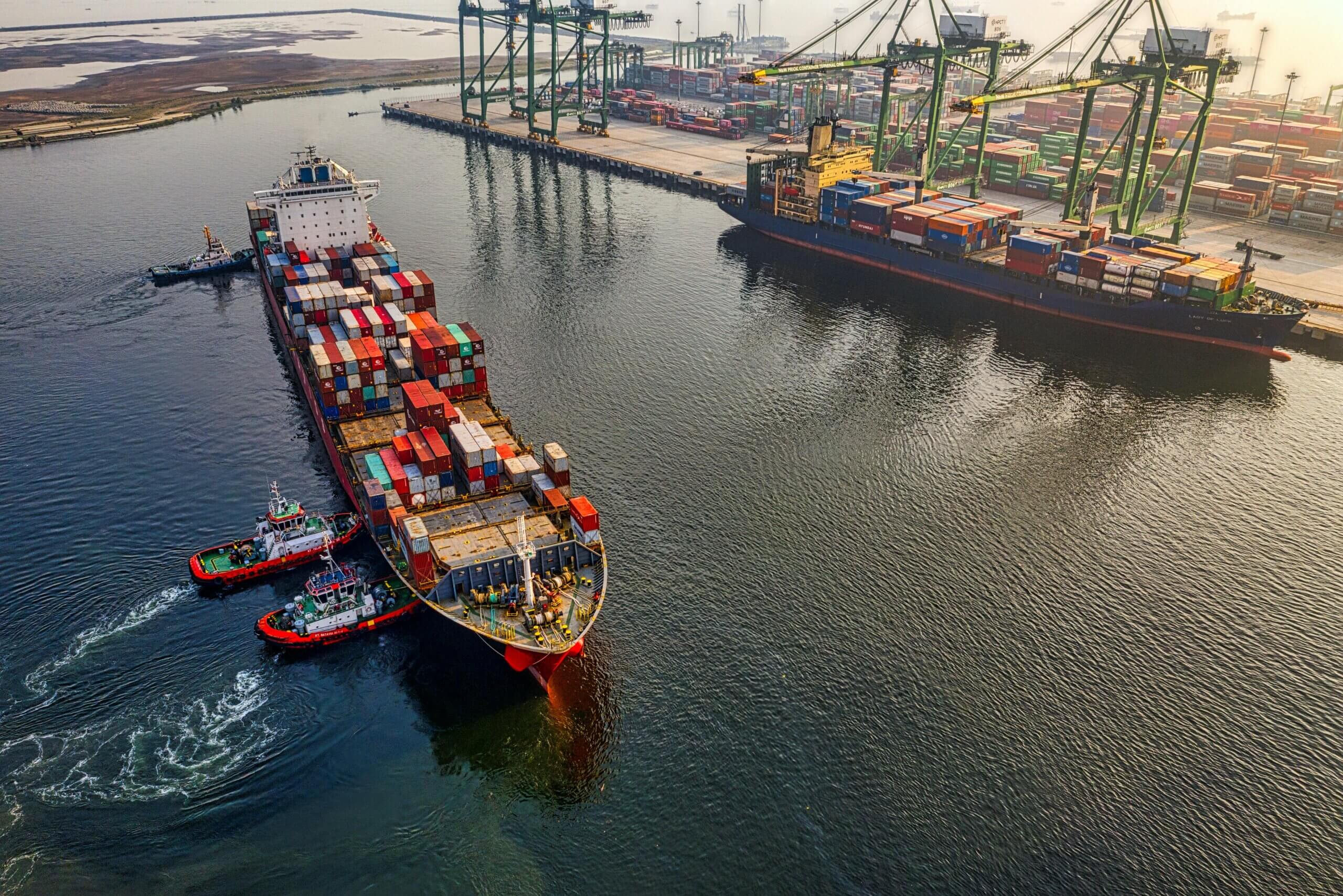For decades, supply chains were considered a cost center, a back office function, and a nearly invisible necessity to global business. A company’s supply chain software and IT ecosystem were no different.
But times have changed.
Supply chains now have the potential to be a company’s most important competitive advantage – both in terms of cost savings, and the ability to deliver a superior customer experience. Suddenly, the IT systems that run the supply chain have become some of the most mission-critical investments CEOs and executives can make.
The pandemic put supply chains front and center. People everywhere realized just how important, strong, efficient, and reliable supply chains are to life as we know it – and to corporate profits.
Today, the world’s largest companies are reallocating substantial percentages of their overall resources to ensure supply chain viability. But a supply chain is only as good as the data behind it. Think: If supply chain intelligence now makes or breaks your business, then the quality of the visibility data that fuels it is one of your businesses’ most important investments.
What You Need: The Best Visibility Data & Seamless Integrations
Supply chains are complex, and becoming increasingly so as the number of inputs from inside and outside an organization grow to include internal systems, suppliers, customers, partners, vendors, and so on. There are a lot of moving parts, and they all need to work together flawlessly. And on top of this, customer expectations of your supply chain’s performance are only growing.
To succeed, you need accurate, real-time visibility into all your shipments as they move across the world via multiple modes of transportation – from an overseas origin to a customer’s door. To achieve this level of visibility, you need software that is not only powerful on its own, but that also works seamlessly with all the other technology in your tech stack.
This combination of powerful visibility data and integrations is the only way to get data that is both accessible and actionable – data that allows you to predict the most efficient and cost-effective ways to move your goods, helps you optimize your pre-transit plans, gives you the ability to manage in-transit exceptions, and streamlines your post-transit workflow.
project44 is the leader in supply chain visibility, touting the largest global network of transportation providers – which allows companies to receive global, multi-modal visibility in real-time. Proprietary project44 technology both collects and cleans data and seamlessly delivers insightful visibility, accurate predictions, and actionable intelligence for goods in transit. These insights are made available both in the most advanced visibility platform – Movement by project44 – and is also available through our comprehensive APIs, which deliver data to any software system you choose. However your organization uses visibility data, you can only achieve the highest levels of supply chain efficiency if you’re able to integrate that data into all the systems that run your organization.
We’ve identified seven especially valuable opportunities to enrich your tech stack’s efficacy with visibility data.
1. TMS – Transportation Mgmt System
This may be an obvious opportunity, but it’s an important one. The system you use to manage transportation is only as valuable as the quality of the data it uses. To be effective, your TMS needs access to the most complete and up-to-date data about what’s happening in the real world right now. Without that, it will be unable to make a positive difference in your organization’s success.
project44 has integrations with over 1,000 TMS providers, ensuring no matter which TMS you rely on, project44 will equip your system with the most comprehensive and accurate visibility data.
2. ERP – Enterprise Resource Planning
Because ERPs manage such a broad set of systems and tasks across an organization, they intersect with logistics at multiple points. For example, if you are unable to pinpoint the time of product arrival at a customer destination, you will not know when to invoice that customer. And if you aren’t billing in a timely manner, payments can get delayed, causing a cash flow issue.
project44 has established partnerships with leading companies so we can enable a truly connected supply chain that is based on real-time quality insights.
For example, our native integration with SAP Logistics Business Network helps organizations make smarter decisions, reduce costs, and increase efficiencies by connecting users to all of their carriers and scaling as they partner with new providers. In addition, Google selected project44 to be the first real-time visibility provider for Google Cloud Supply Chain Twin solution. This strategic partnership will provide joint customers with a view into the supply chain network, including data across all modes, existing integrations at scale, and the benefits of strong strategic relationships.
These integrations and partnerships make sure that your ERP has the visibility data it needs to improve workflows across your organization.
3. Planning Systems
To be effective, your planning system needs to have information that gives you foresight that allows you to make the right logistics choices. With so little margin for error, you need accurate, real-time data about every detail related to every shipment so that you can see clearly which ports, carriers, and routes will help you achieve optimal results – the most on-time, reliable, and sustainable delivery. project44 has the information that helps you get the most out of your planning system, and we have partnerships that support this effort.
For example, the out-of-the-box integration between o9’s Supply Chain Control Tower and project44’s high-quality logistics data helps joint clients quickly and easily identify potential supply chain risks and make real-time decisions to mitigate disruptions.
4. OMS – Order Management Systems
Your OMS may be proficient at helping you place orders and do collaborative PO management. It may offer a precise snapshot of the single moment in time when an order is placed. But it’s unlikely that it provides continual, real-time visibility into events that unfold after that point. What you need is a really strong connection between how you place orders with suppliers and how things work downstream after the orders are cut.
By augmenting your OMS with high-quality visibility data, you can ensure complete control over the entire process. From start to finish, you will have access to the insights you need to quickly and successfully adjust course in response to unforeseen circumstances. Ultimately, it comes down to selecting the most appropriate solution to accomplish your objectives.
5. WMS – Warehouse Management System
Further downstream, warehouse management systems offer plenty of opportunities to put visibility data to good use. For example, integrating quality visibility data gives you insight not only to the inventory inside your warehouse, but also to what’s coming in and what’s going out. The data allows you to accurately predict shipment arrivals and departures, which in turn makes it possible to more effectively manage labor staffing and bay utilization during peak season.
Integrating this kind of real-time data across multiple warehouses helps you better manage your footprint of inventory by making quick, efficient adjustments to reroute goods and materials as needed.
6. Data Lake
Every organization knows the power of data, but not every organization is set up to take full advantage of that power. It’s one thing to collect a lot of data. It’s another thing entirely to derive value from that data by using it to help you run your business more intelligently.
project44 was founded as an API-first company, and we’ve kept that part of our DNA intact, evolving it alongside our platform offerings. We always have and always will be there for companies that want to use their own data to answer business-critical questions. We can push our real-time visibility data into whatever system a customer wants, even if that’s an internal data lake from which they extract data to run specific queries.
7. Customer-facing Systems
Customer expectations have risen sharply in recent years, creating a whole other set of logistics challenges. In addition to exponentially greater ease and speed, customers also expect greater levels of transparency about order status from the minute they purchase to the minute a package arrives at their front door.
project44 allows you to share information as you see fit. You can give your customers access to the same up-to-date logistics information you have, whether they have a project44 account or not. This helps give your customers a window into what’s happening at every step of the way, which helps increase not only transparency, but also trust and customer confidence.
Visibility Data – A Non-negotiable Part of Any Business Success
Given the world-changing events of the past few years, it’s unsurprising that companies are suddenly much more aware of just how important quality supply chain logistics data is to their success. They now see the connection between this data and the functioning of core business systems. And they are realizing that without the most comprehensive, detailed, and up-to-date visibility data, those systems simply don’t work.
Bottom line: If you don’t have visibility into transportation data across all your systems, you don’t have the complete picture. And without the complete picture, you can’t win against competition who are better informed – and therefore more agile and resilient – than you are.
To learn more about the power of visibility and how project44 is empowering today’s business leaders with the most global, comprehensive, and highest quality data, check out our Visibility 101 webinar. It will open your eyes to the possibilities.



